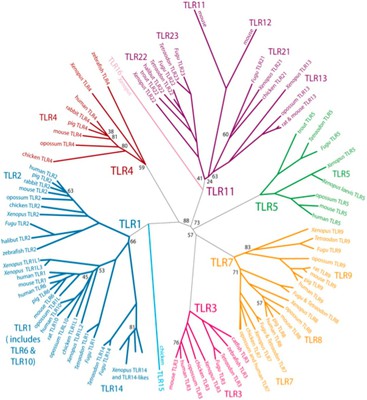This photo essay tracks toxicity through multiple scales, from the molecular to the global, and the multiple technoscientific investments necessary to visualize its workings. The entry point is what are called "pattern recognition receptors" (PRR), molecular structures on the surface of cells that are a key mechanism in the complex signal transduction pathways through which toxins exert their (not always deterministic) effects. These "semiotic bridges" (a term used by biosemioticians, biologist/philosophers who think through Bateson [with his interest in "patterns that connect"], C.S. Peirce, Thomas Sebeok, and others) mediate between an outside and an inside--transduce, we can also say, an environmental toxin (such as particulate matter in air pollution) into some range of cellular responses that, cumulatively, become emergent health effects in "a body" and "a population"-- useful but misleading abstractions (i.e. yet another pharmakon in these tangled chains of pharmakons) for a sexed, gendered, classed, raced, geocoded, et cetera-ed person.The images in this essay represent different kinds of visualizations that scientists routinely produce or engage with as part of their work, the often publicly-funded work of "basic research" into toxicological mechanisms and effects. The essay reads images like these ethnographically for what they can signal to us about the more local worlds that produced them, and the more global worlds in which they try to productively intervene.
Description

